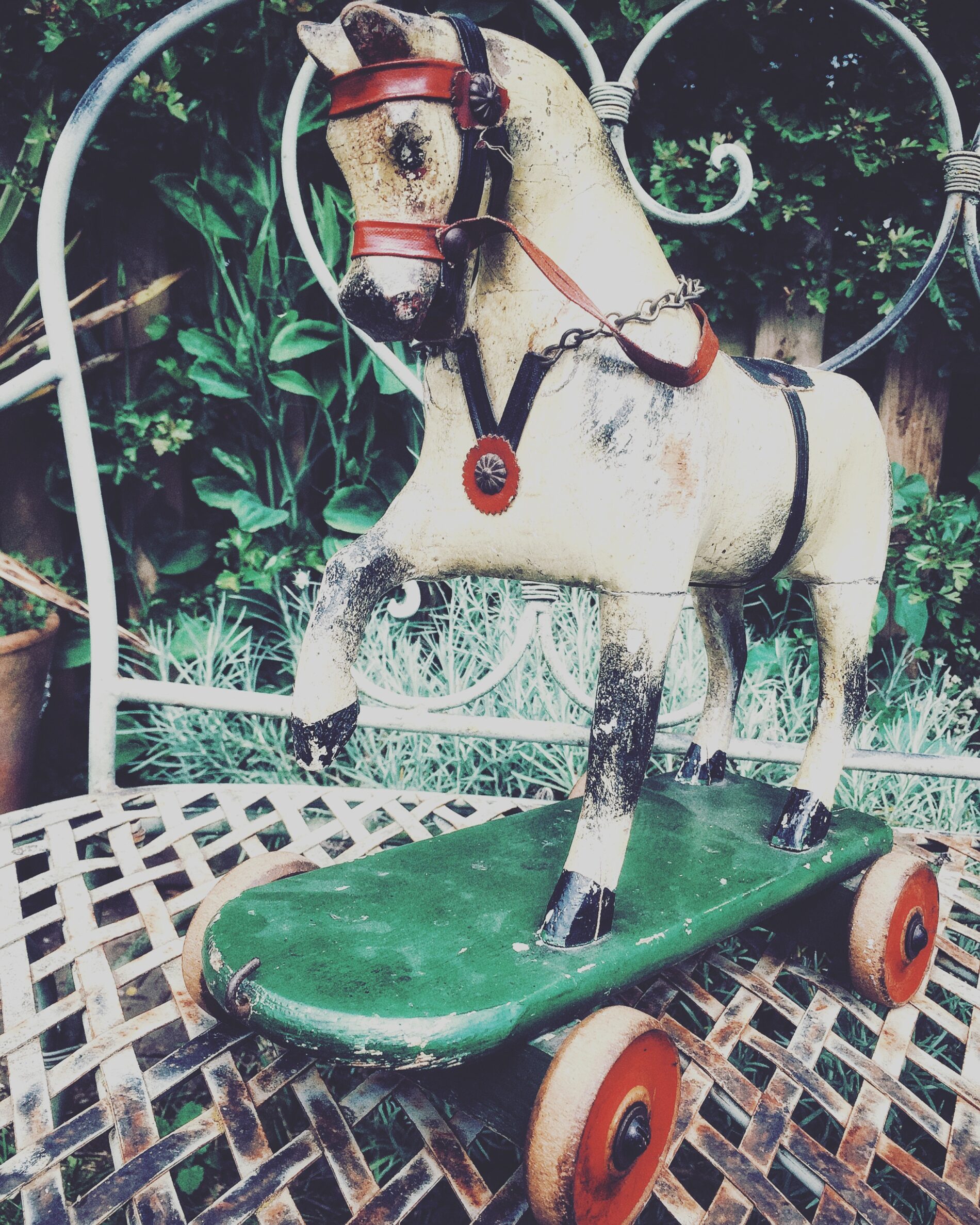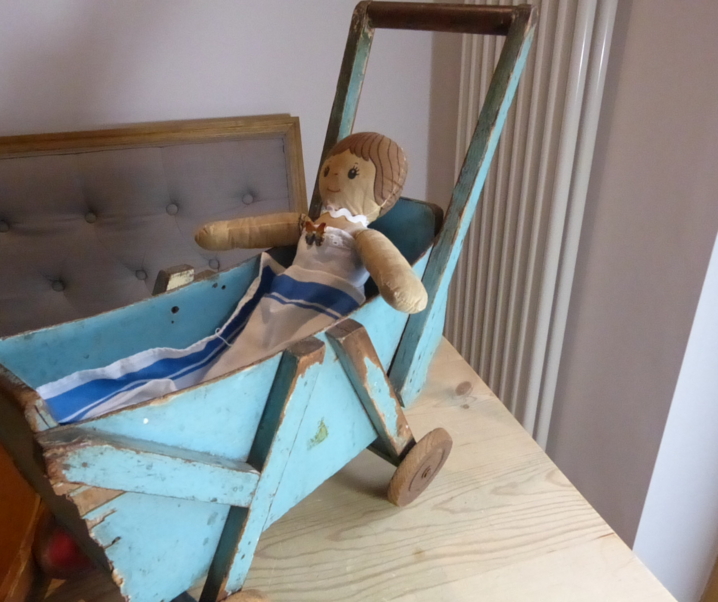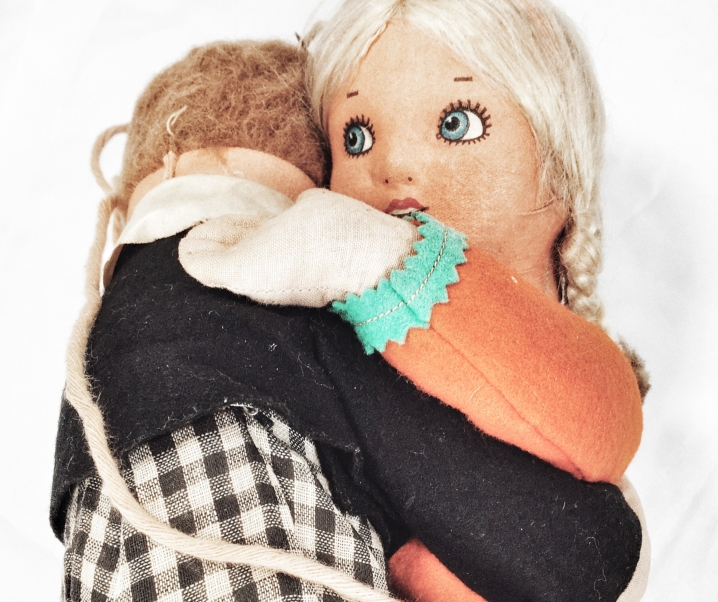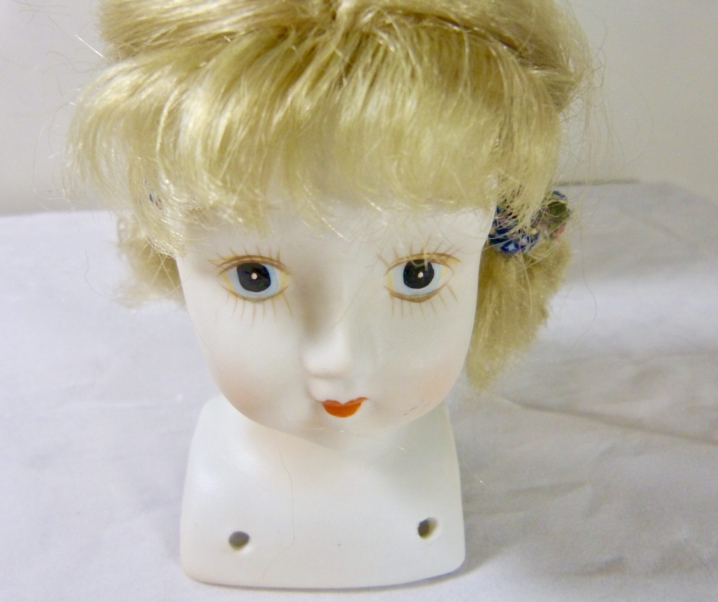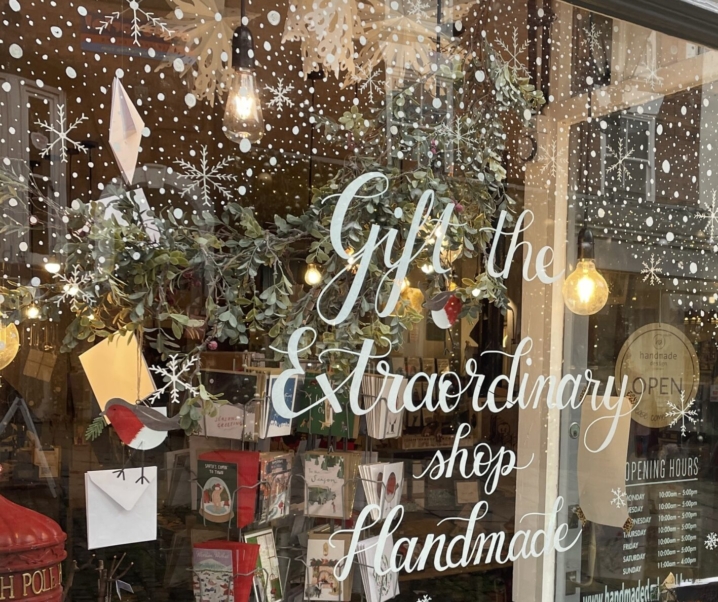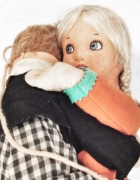Sometimes when you are a toy collector your heart rules your head. Sitting in a toy auction with the aim of purchasing three sailor dolls (which I’d researched and knew I could sell for profit) I found my heart doing the horn-pipe as a certain lot approached.

“Lines Bros; A Victorian pull along wooden toy horse, approx 34cms high, as found.”
There is nothing my weak will likes more than a toy horse (other than a toy fox terrier dog).
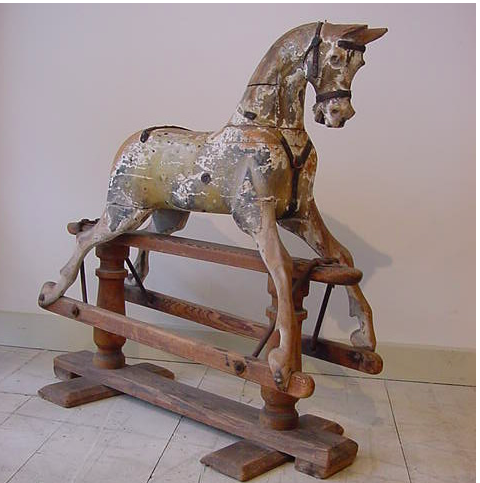
Add to this the words ‘Lines Bros’ and I am sunk. If you are over the yard-arm of a certain age (50) you’ll be familiar with Lines Bros toys. This Victorian company segued seamlessly into ‘Tri-ang’ which was once – no probably about it – the biggest toy manufacturer in the world.
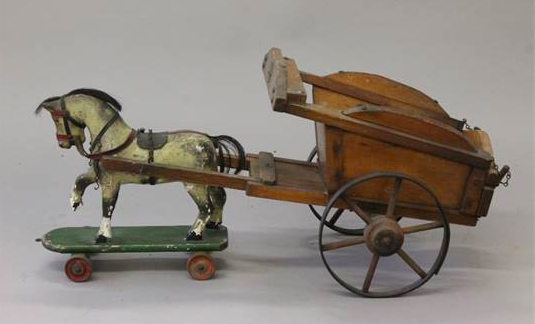
If you don’t know the name Tri-ang (really?) you’ll be familiar with the subsidiaries like Hornby (trains), Pedigree (Sindy), Dinky (cars) and Meccano (no explanation required).
When this horse was made, the globally-dominating toy empire was light years away. This pull-along dates a time when children played with horse and carts because that was the main mode of transport on the streets outside their door.
You can see why I fell under its spell. This is where Britain’s toy story started. Someone whittling a doll or horse out of a hunk of wood led to everything you see in Hamleys today.
But a word to the wise. You have to reign your heart in at auctions. The words ‘as found’ should alert you to the fact that your gesso beauty is showing signs of its 100-plus years. I’d examined it; I knew that the paint was flaking, the legs were wobbly, the harness partly perished and the mane was completely missing.
Even so, by the time the auctioneer started to describe the horse, my hand was shaking. Something in the pit of my stomach told me I was going in for a bid.
The estimate was a conservative ‘try your luck’ £100. I told myself I’d go up to £120.
The bidding started (due to a pesky internet bidder) at £130.
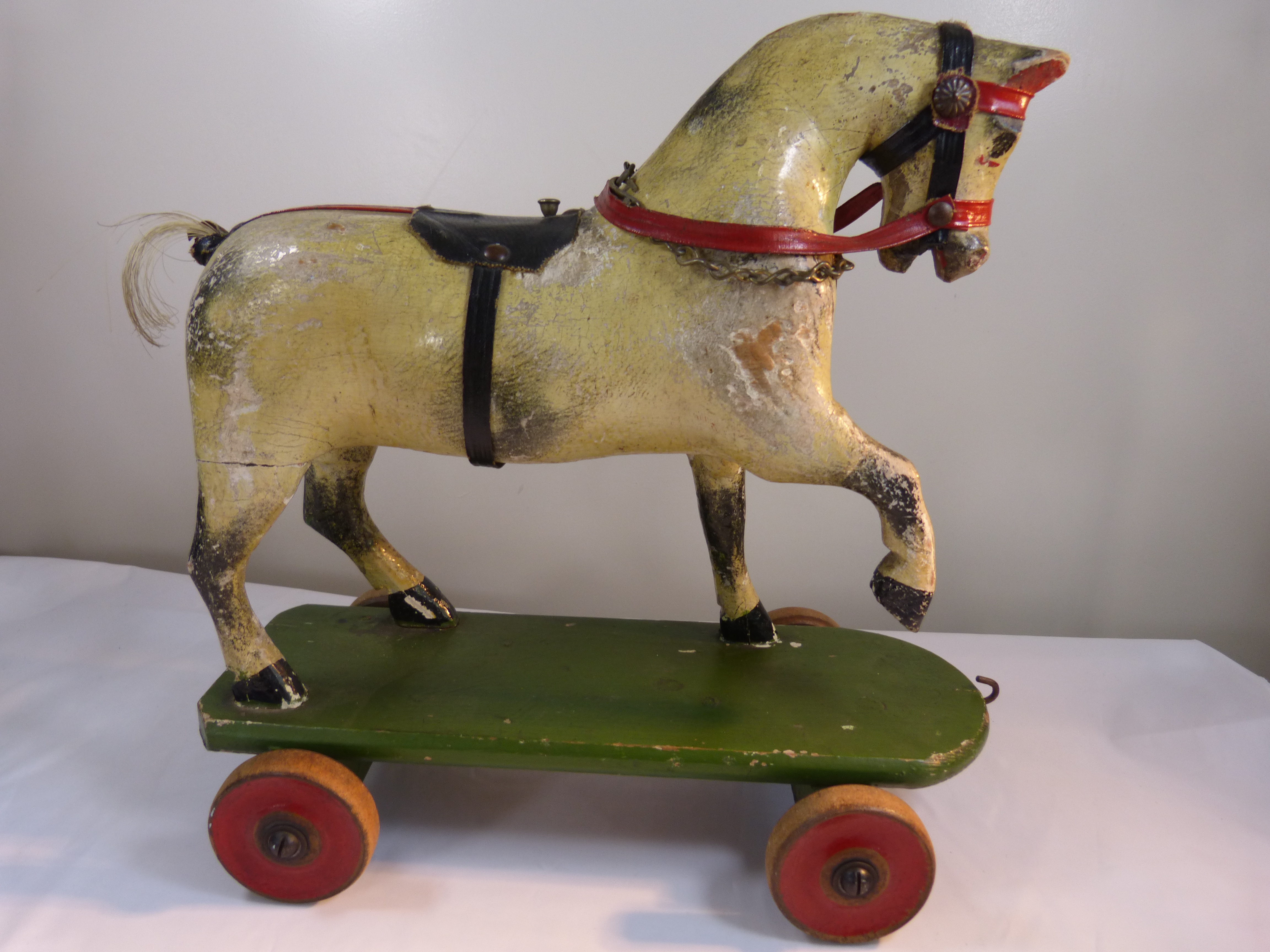
Now this, my toy collecting friends, is the point where any self-respecting buyer should walk away. But I couldn’t resist having one little dibble at £140 as I was confident my internet buddy would rescue me from my impulse. But no. The bidding stopped there. With fees and VAT, my little bit of equestrienne history was going to cost a staggering £175.
Talk about losing your shirt on the gee gees. Let’s just say no sailors dolls were bought that day. Shucks, I had to borrow money for a cup of tea.
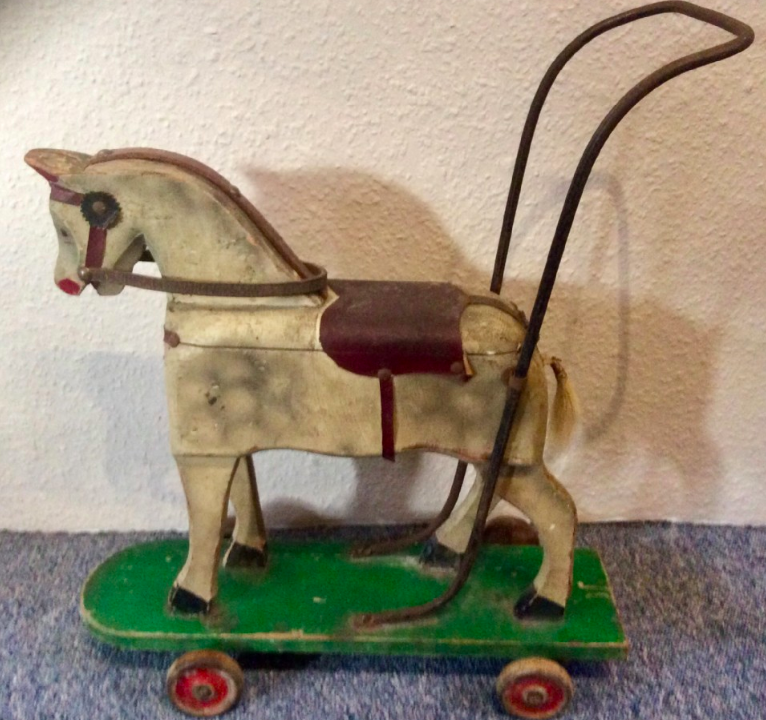
My head/wallet might be reeling, but my heart is aglow. Buy a toy horse now and you’ll be lucky if it sees out the week. The reason G & J Lines Bros horses are able to canter confidently into a new century is because they were made properly, by craftsmen.

A short history of some of the pretty horses made by Lines Bros
George Lines was the founder of the company. He’d been taught by a carpenter in North London and began to make models – especially horses. But it was savvy younger brother Joseph – who’d cut his teeth in the toy trade – who’s credited with imposing discipline on George’s working methods. The company they launched together was called G & J Lines.
The first ‘factory’, near King’s Cross, London was opened in 1850. The most popular products were the horses and included life-sized models for saddleries to display their wares; horses for carousels and heads for pubs as well as horse tricycles and horse pull-alongs (like my little beauty) which usually had carts or wagons attached.
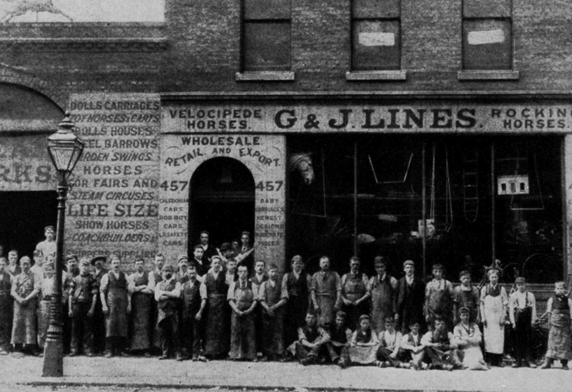
Horses (see catalogue entries below) were sold coupled to a variety of vehicles including a Pickford’s removal cart, a water cart with working water pipe made for Gamages department store in 1913 (the company also took commissions for Hamleys and Harrods) and a gypsy caravan made for Queen Victoria’s household which even bore the royal coat of arms.

A move to larger premises, an old steam works on nearby Caledonian Road, enabled the company to branch out into new wooden toys like cars, omnibuses and dolls houses. The firm also started to make beautifully built rocking horses. They were a hit; by the turn of the century, G&J Lines employed 150 people, making it the biggest toy factory in Britain.

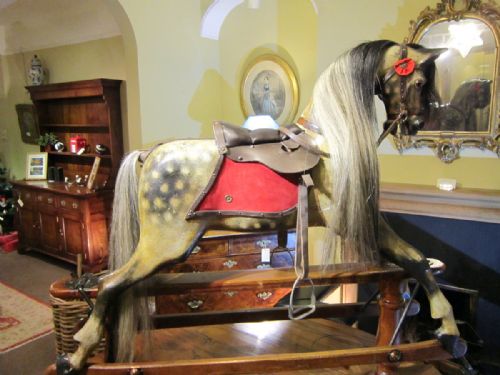
Many of these horse toys were sold by the famous toy department of Gamages, in Holborn (a London institution which closed in 1972). These days, Lines Bros. Victorian horses are very rare. Restorer Maggi Batch (see above) has one in her private collection.
“It’s mostly original, with only slight titivation,” she explained.
“This particular horse has a badge to depict it was made during her reign – the plaque shows her picture.”
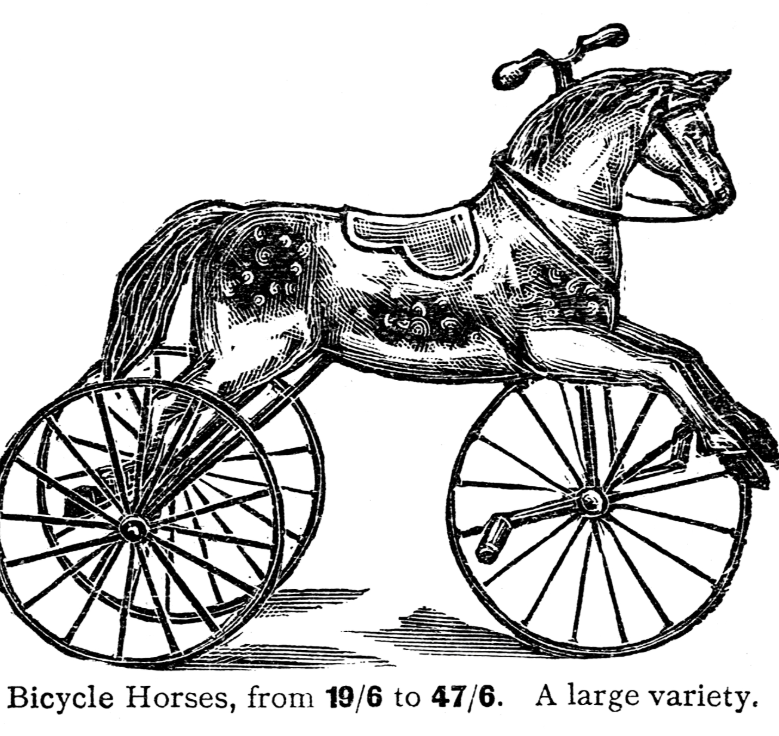
According to Joseph Lines’ grandson Richard (quoted in a Lines Bros/Tr-iang catalogue auction in March 2018*), George became increasingly out-of-touch with the toy business and ‘retired’ to the family farm.
“He retired or got the push,” Richard observed.
“By which time Joseph had enough sons (William, Walter and Arthur and George) to carry on the business and turn it into something significant.”

Walter was the go-getter ‘brains’ behind many of the toy designs. He also streamlined production and spear-headed expansion. It was clear he’d had enough of making horses in the old fashioned way;-
‘My brothers and I were hard at it in the factory within a couple of days of leaving school. We carved pole horses and rocking horses and loaded vans, and by far the most horrible job of all, cleaned the raw cows tails before they were cured for nailing to the rear ends of rocking horses.’ Walter Lines.
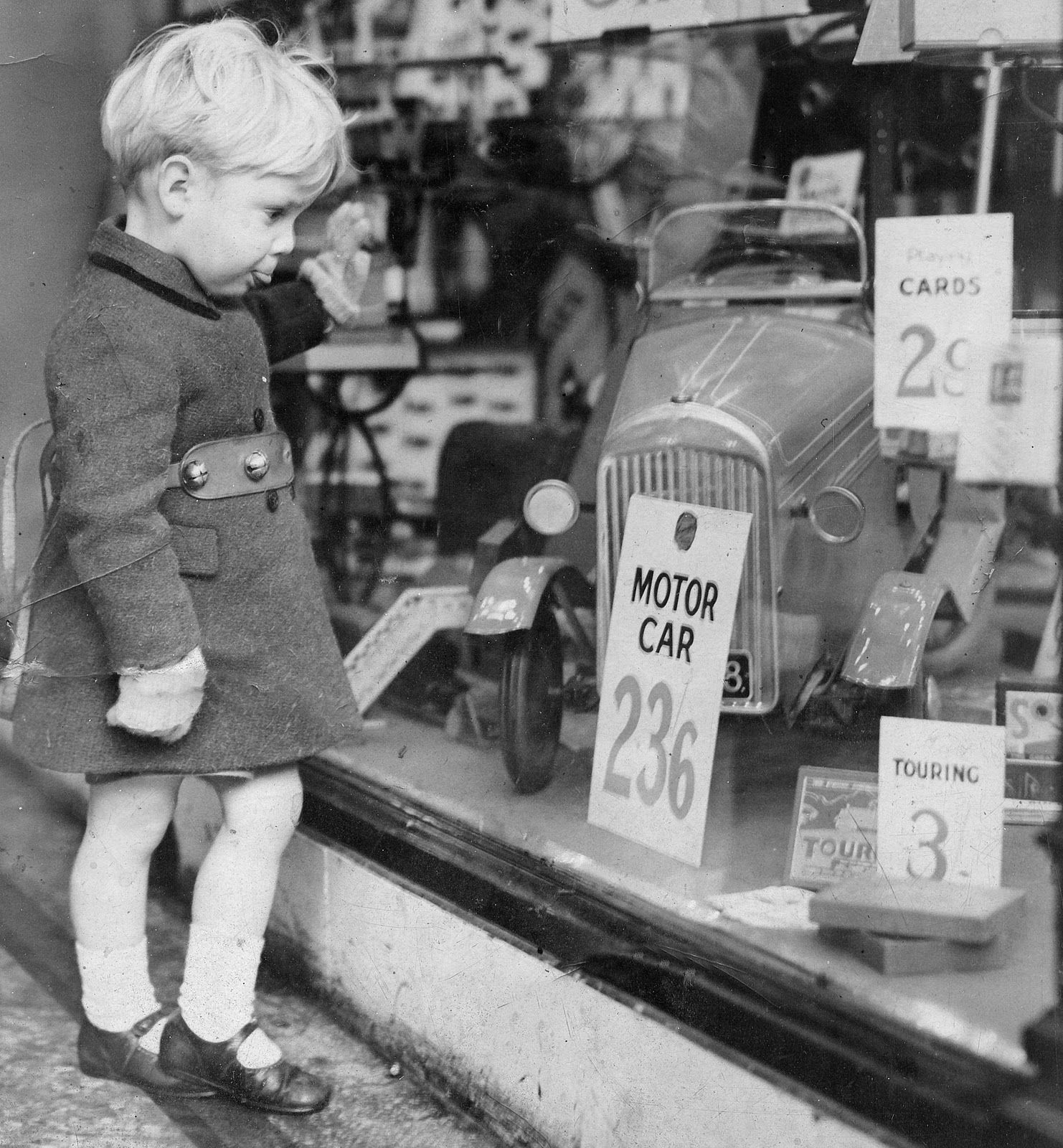

When Walter and Arthur go off to war, they realised – after witnessing mechanisation on the battlefield – that horse-drawn transport would become obsolete. The future, they predicted, would be automated…people would travel by cars, trucks, trains and planes leading to a demand for these toys. Horses would be put out to pasture.
Their father, Joseph, did not agree. Walter wanted to move into bigger premises to produce scooters (he’s credited with invention of scooters). Joseph couldn’t conceive of children wanting to ride anything which wasn’t horsey/animal shaped. Frustrated with Pa, the Lines brothers branched off. They called the new company Lines Bros Ltd but traded as Triangtois and later Tri-ang.
In 1924, the boys opened a high tech’ factory in Merton, South London. It was the largest toy factory in the world featuring a railway siding and two football pitches – handy for testing the toy planes. The rocking horse remained in the catalogue; but not the artisan versions of old. After World War Two, the majority of rockers were made from more affordable materials like metal and plastic and – while they are very collectible – they are not as beautiful as their wooden forebears.
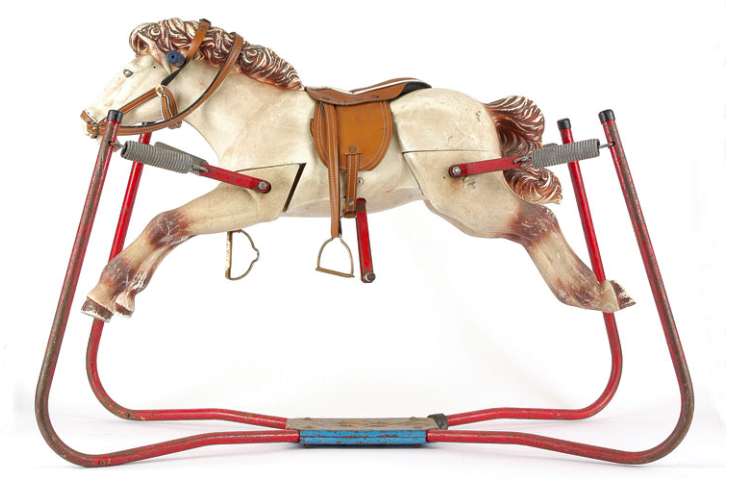
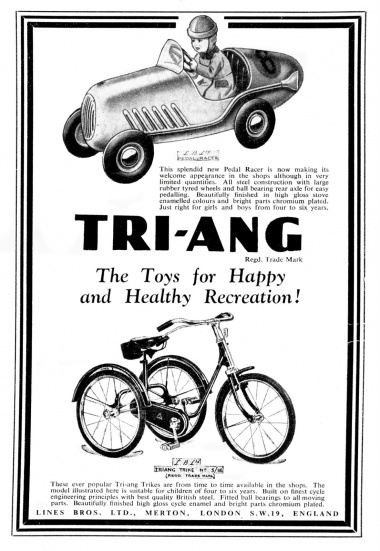
By the 1950s, parents finally had spare cash in their pockets for toys and Tri-ang went into a period of rapid expansion. By 1966 Tri-ang owned 41 companies world-wide. Sadly, just as the empire was straddling the globe; the demand for quality toys went into free-fall.
A lot of British toy producers were hit by cheap imports (often clones or copies of UK toys) from the Far East. In 1970, the company filed a record loss of £4.5 million. A year later, when an offer from an American tobacco giant of £5m was withdrawn at the 11th hour, the company went into liquidation.
An employee at the Tri-ang factory in Wales recalls seeing ‘highly collectible toys being loaded into skips’. After Walter’s death in November 1972, the final parts of the toy company were broken up and sold off.
It was the finishing line for the all the pretty horses.
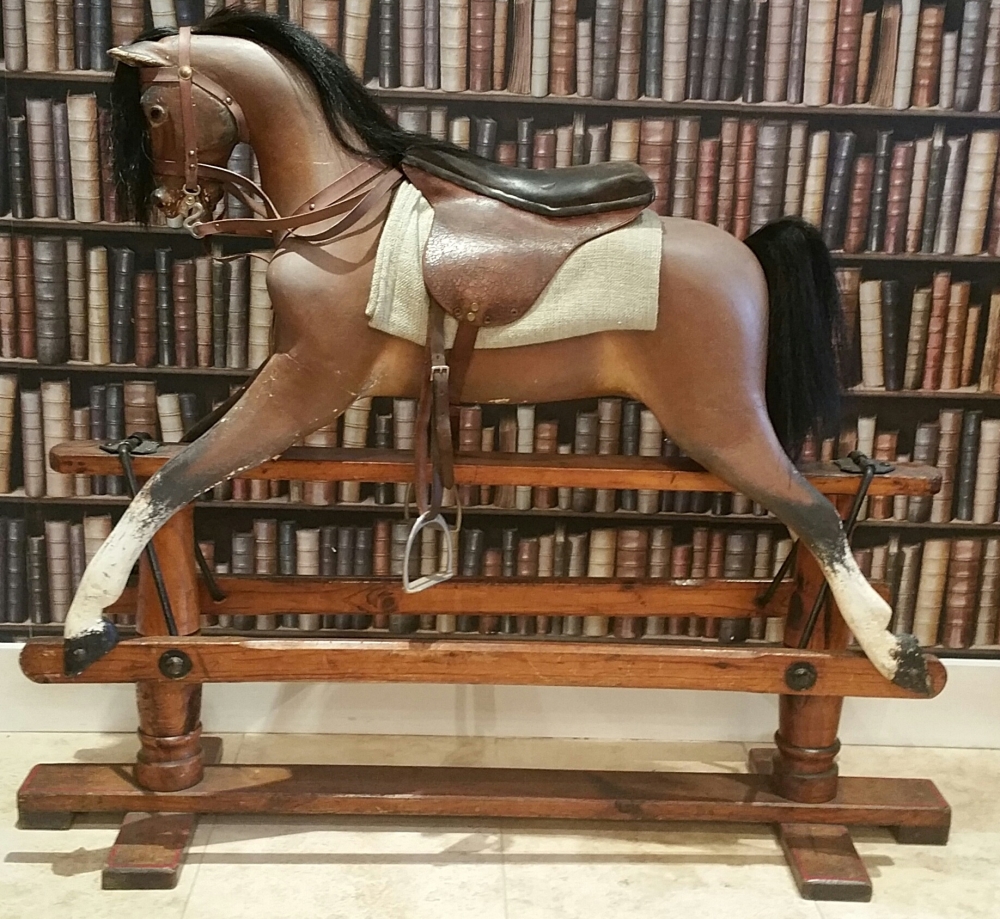
The legacy? The early splendid wooden rocking horses are among the most highly prized in the world according to Maggi Batch, of Rocking Horse Heaven; a company which buys, restores and sells vintage rocking horses.
“Early Lines horses are just as sought after and collectible as FH Ayres,” says Maggi (FH Ayres are known as the Rolls Royce of rocking horses).
“Most collectors strive to have both in their collection.”
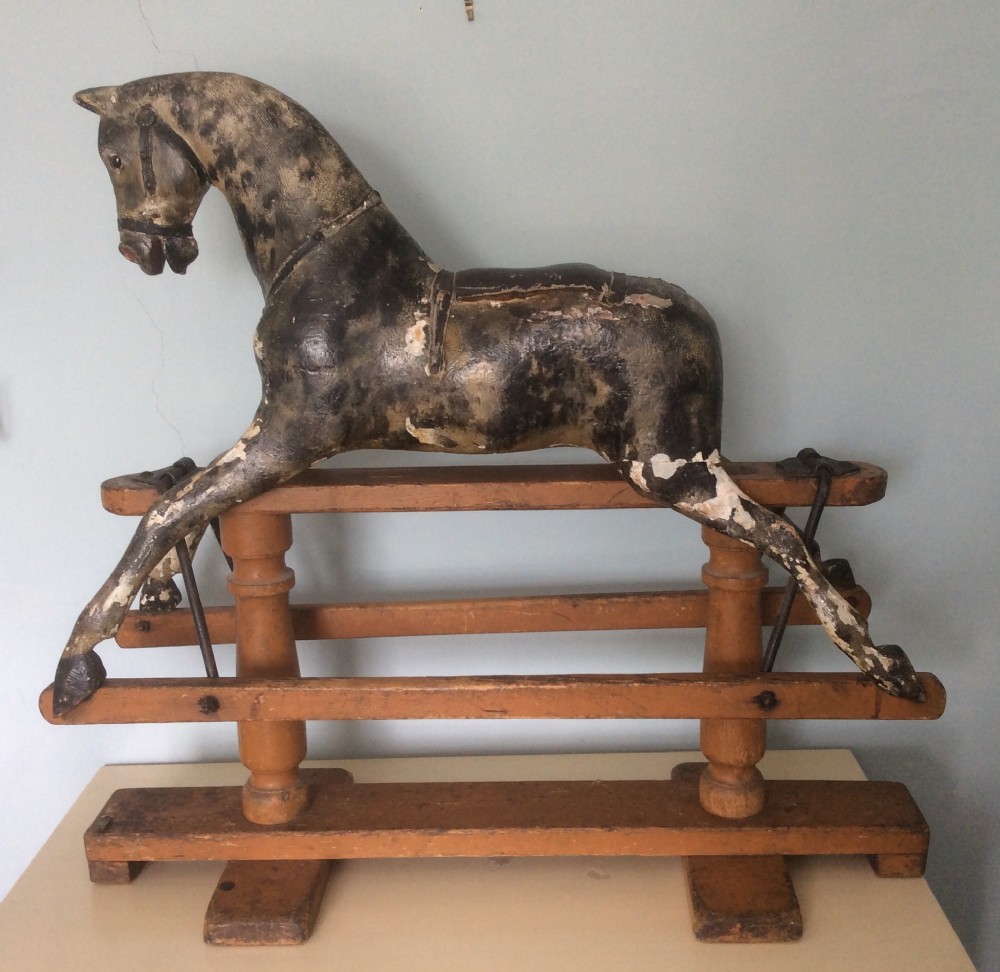
At the time of writing, Maggi had a lovingly restored ‘Sportiboy’ for sale at £1650. Available in different sizes – the Sportiboy encapsulated all that was magical about G & J Lines horses. Everything, from the the rich gesso patina down to the sturdy runners, screams quality. They had real tumbling horse-hair manes, detachable leather saddles and soft saddle clothes. Maggi says they can be identified by their beautifully painted faces, flared nostrils and the ‘thistle’ logo (from 1910).
Value; In 1898, an advertisement states the rocking horses cost from 15s 6d to £4 4s. Expect to pay more than £1-5000 for an early Lines rocking horse; the price will vary according to the condition and/or quality of the restoration.
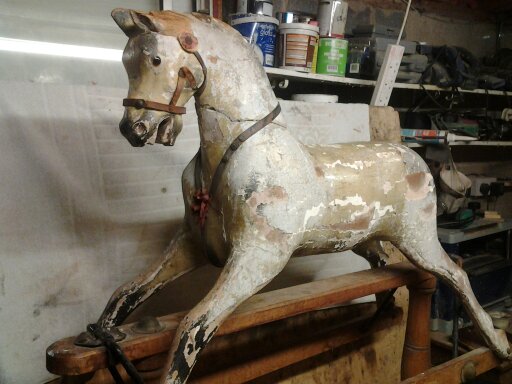
Cherished Rocking Horses of Worksop is another workshop offering quality restoration. A typical restoration of a flaky and cracked horse will see them being stripped back to the wood to be repainted with addition of hair, saddles, bridles etc. Once finished – they are good to go for another hundred years.
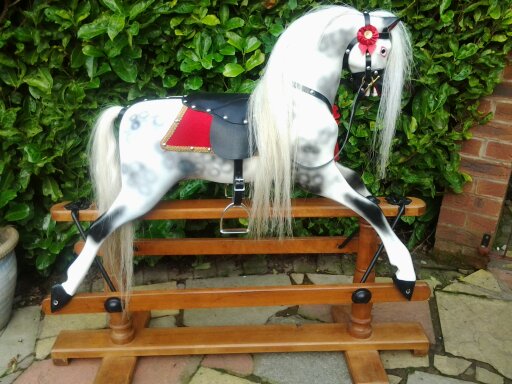
For early pull-along horses and carts – expect to pay anything from £80-400 depending on condition.
Buyer’s beware; There are early Lines Brothers horses and rockers for sale on internet sites like eBay but they don’t have plastic eyes, Phillips screws and raffia tails. For a guide on how to spot a fake visit Real or Repro.
Sources: www.triang.nl a brilliant concise history
*Specialist Auction Services – catalogue of the Lines Bros/Tri-ang auction in March 2018
Brighton Toy Museum – page on the history of George and Joseph Lines
V&A Museum of Childhood – if you really want a comprehensive history; look no further
To buy a restored horse try;-


